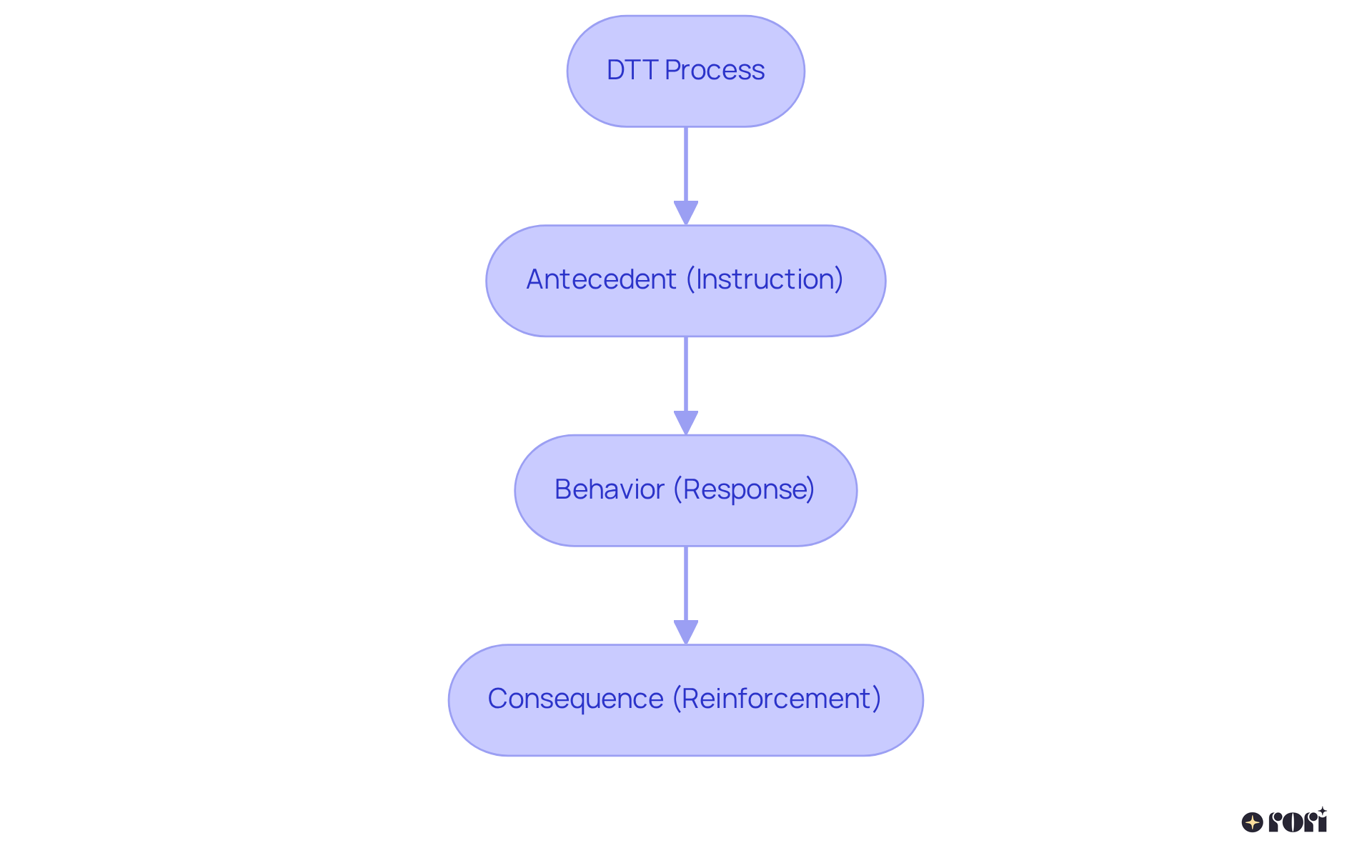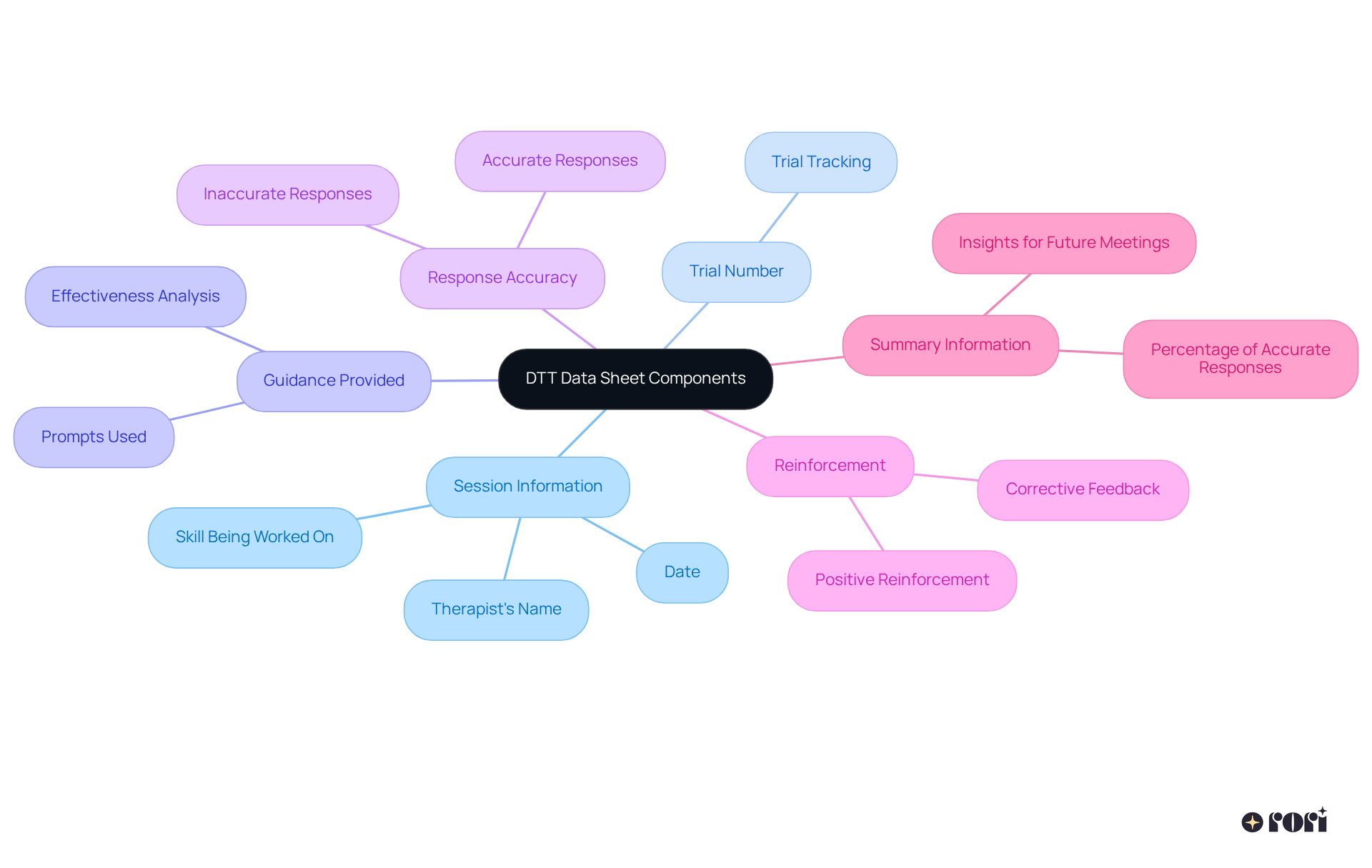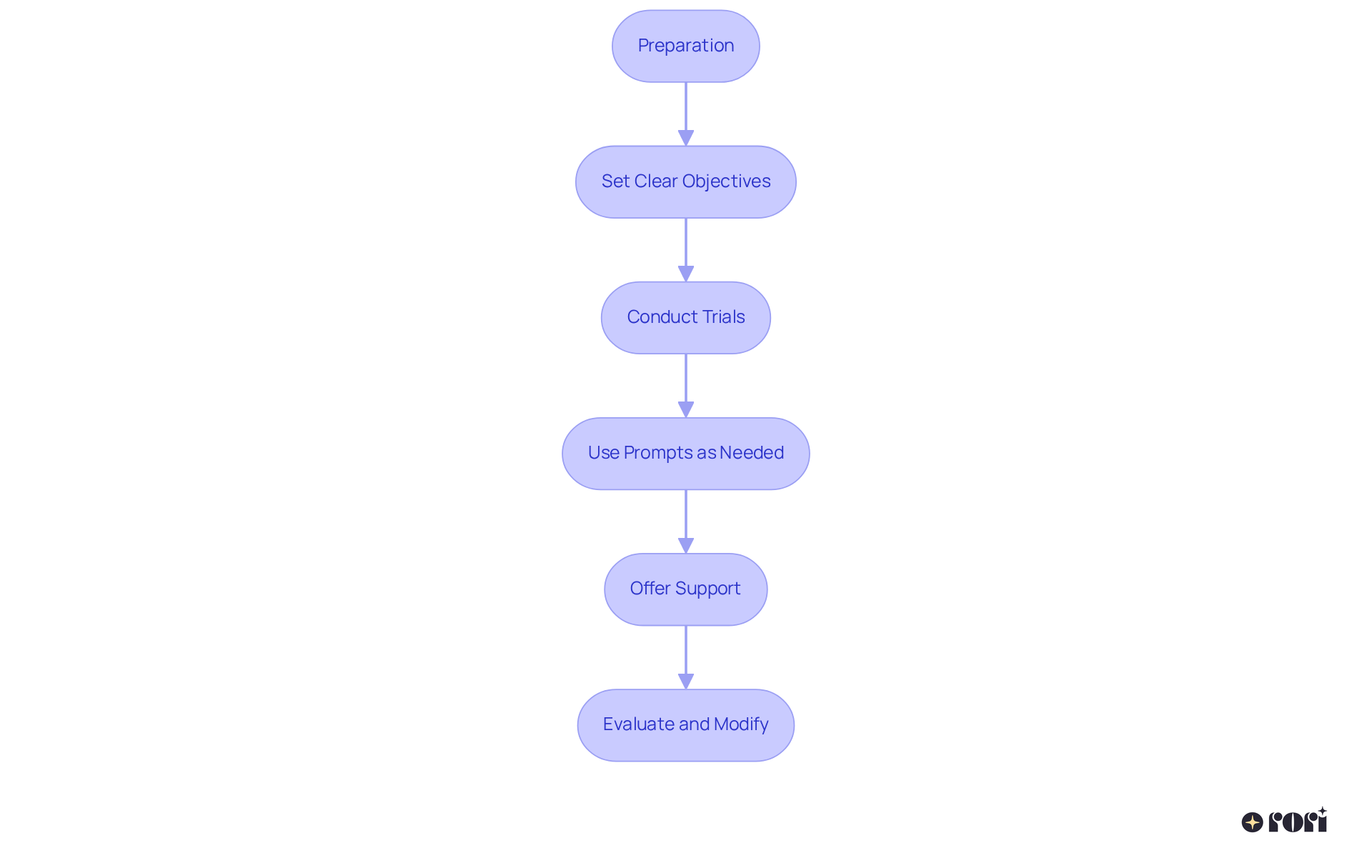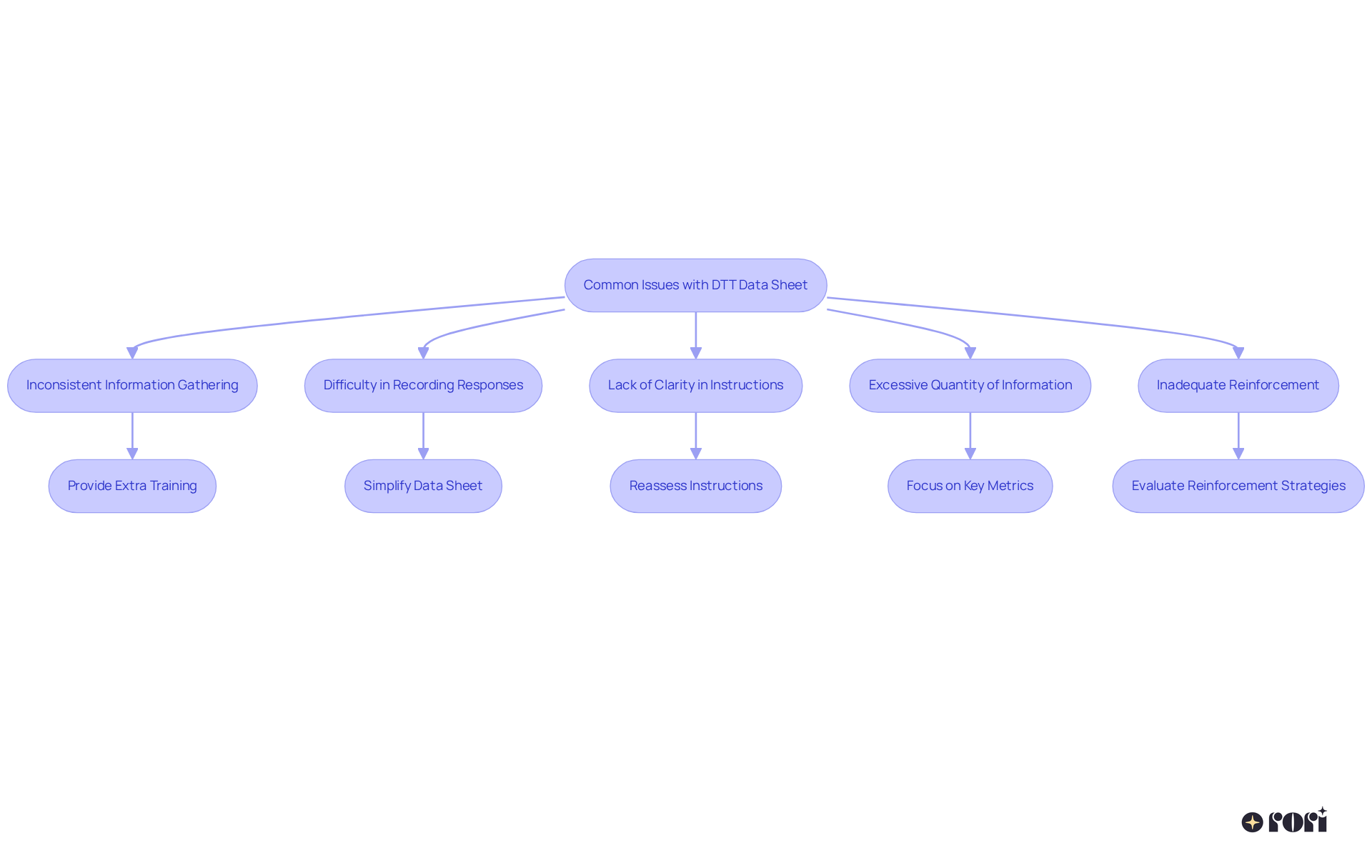This article highlights why mastering the DTT (Discrete Trial Training) data sheet is so important for effective ABA (Applied Behavior Analysis) therapy. By understanding and using the DTT data sheet, practitioners can systematically track progress, evaluate teaching strategies, and really enhance the learning experience for children. Each session can be tailored to meet individual needs, making a big difference in their journey.
Let’s explore this together! When practitioners are equipped with the right tools, like the DTT data sheet, they can create a more personalized approach. This not only helps in tracking progress but also ensures that each child's unique learning style is respected and nurtured. It’s all about making the learning experience as enriching as possible.
So, if you're a parent navigating this journey, remember: understanding these tools can empower you and your child. We’re here to help you every step of the way as you dive into the world of ABA therapy!
Mastering the DTT data sheet is a crucial step for practitioners in the world of Applied Behavior Analysis (ABA) therapy, especially when working with individuals with autism. This handy tool not only makes tracking progress easier but also enriches the learning experience for children by ensuring that interventions are tailored just for them. Yet, many practitioners encounter challenges when trying to make the most of this resource.
So, what are some best practices to overcome these hurdles and truly maximize the benefits of the DTT data sheet? Let’s explore this together!
Discrete Trial Training (DTT) is a structured teaching approach used in Applied Behavior Analysis (ABA) therapy, and it’s particularly effective for individuals with autism. By breaking down skills into smaller, manageable pieces, DTT allows for focused instruction and learning. Each trial has three main parts:
This systematic method offers repeated opportunities for learning and reinforcement, making it easier to acquire and generalize skills across different contexts.
Understanding the DTT data sheet is super important for healthcare professionals and caregivers. It lays the groundwork for effective information gathering and examination, as detailed in the DTT data sheet, which are crucial for tracking progress and adjusting interventions as needed. When practitioners master DTT, they can enhance the learning experience for children, ensuring that each session is productive and tailored to individual needs. Let’s explore this together and see how DTT can make a difference!

When it comes to gathering information during therapeutic meetings, the DTT data sheet is a valuable tool that includes several key elements. Let’s break them down together!
First up is Session Information. This part covers the date, the therapist's name, and the specific skill being worked on. It’s super helpful for organizing and referencing data over time.
Next, we have the Trial Number. Each trial should be numbered to keep track of how many trials are conducted during a session. It’s all about keeping things neat and tidy!
Don’t forget to document the specific guidance provided to the young one, including any prompts used to encourage a response. This is essential for analyzing how effective different prompting strategies are.
It’s also important to note whether the young one’s reply was accurate or not. This helps us assess progress and figure out if any teaching strategies need a little tweak.
And let’s talk about Reinforcement! Make sure to note what type of reinforcement was given after the child's answer—whether it was positive reinforcement for a correct answer or corrective feedback for an incorrect one.
Finally, wrap things up with Summary Information. At the end of the meeting, summarize everything gathered, including the percentage of accurate responses and any insights that might guide future meetings.
By understanding these components, clinicians can utilize the DTT data sheet to gather extensive and helpful information that will truly guide their therapeutic approach. So, let’s explore this together and make the most of our time in these meetings!

To effectively implement the DTT data sheet during therapy sessions, let’s walk through these steps together:
By following these steps, you can ensure that you’re effectively using the DTT data sheet to enhance the learning experience for children. Let’s explore this together and make a difference!

When using the dtt data sheet, practitioners might run into some common challenges that can make information gathering a bit tricky. Let’s dive into some helpful tips to tackle these issues together:
Inconsistent Information Gathering: If you notice inconsistencies, it might be time for everyone on your team to get a little extra training on how to use the information sheet effectively. Regularly reviewing the information gathering process can help spot and fix these inconsistencies. Remember, statistics show that consistent information gathering is key for accurate evaluations and effective treatment planning in ABA therapy.
Difficulty in Recording Responses: Recording responses can sometimes feel overwhelming. If that’s the case, think about simplifying your data sheet or using digital tools that make data entry easier. This can streamline the process and help reduce errors, allowing you to focus more on the needs of the young individual.
Lack of Clarity in Instructions: Are the youngsters not responding as you’d hoped? It might be time to reassess how clear your instructions are. Make sure they’re straightforward, and consider adding visual supports to aid understanding. Many case studies have shown that clear instructions can significantly improve response rates in individuals with autism.
Excessive Quantity of Information: If you’re feeling overwhelmed by too much information, try honing in on the key metrics that truly reflect the young one’s progress. Prioritize information that aligns closely with the goals you’ve set. Plus, using AI-powered technologies can help analyze data more efficiently, letting you focus on what matters most.
Inadequate Reinforcement: If the young one isn’t responding positively, it might be time to evaluate your reinforcement strategies. Check to see if the reinforcements are genuinely motivating for the child and delivered right after the correct response. Tailoring treatment plans to consider individual preferences can really boost the effectiveness of your reinforcement strategies.
By proactively addressing these challenges, you can significantly enhance the effectiveness of your DTT data sheet sessions. This way, data collection remains a vital and beneficial part of the therapeutic journey. We’re here to help you every step of the way!

Mastering the DTT data sheet is crucial for making ABA therapy more effective, especially for individuals with autism. This structured approach not only encourages focused learning but also provides a systematic way to track progress and adapt strategies. By breaking down skills and using the DTT data sheet, practitioners can craft a personalized learning experience that truly meets each child's unique needs.
The article highlighted the essential components of the DTT data sheet, such as:
Each of these elements plays an important role in collecting comprehensive data that informs therapeutic decisions. We also discussed practical steps for using the DTT data sheet during sessions, along with common challenges and solutions to ensure smooth data collection.
Ultimately, the importance of the DTT data sheet goes beyond simple documentation; it serves as a powerful tool that drives effective interventions in ABA therapy. By embracing best practices and proactively addressing potential issues, practitioners can ensure that their sessions are not just productive but also impactful. Remember, emphasizing the importance of consistent and clear data gathering will lead to better outcomes for children. Mastering the DTT data sheet is a vital step in the journey toward effective ABA therapy. Let’s explore this together!
What is Discrete Trial Training (DTT) in ABA therapy?
Discrete Trial Training (DTT) is a structured teaching approach used in Applied Behavior Analysis (ABA) therapy, particularly effective for individuals with autism. It breaks down skills into smaller, manageable pieces for focused instruction and learning.
What are the main components of a DTT trial?
Each DTT trial consists of three main parts: an antecedent (instruction), a behavior (response), and a consequence (reinforcement).
How does DTT facilitate learning?
DTT offers repeated opportunities for learning and reinforcement, making it easier for individuals to acquire and generalize skills across different contexts.
Why is understanding the DTT data sheet important?
Understanding the DTT data sheet is crucial for healthcare professionals and caregivers as it helps in effective information gathering and examination, which are essential for tracking progress and adjusting interventions as needed.
How can mastering DTT enhance the learning experience for children?
When practitioners master DTT, they can enhance the learning experience for children by ensuring that each session is productive and tailored to individual needs.